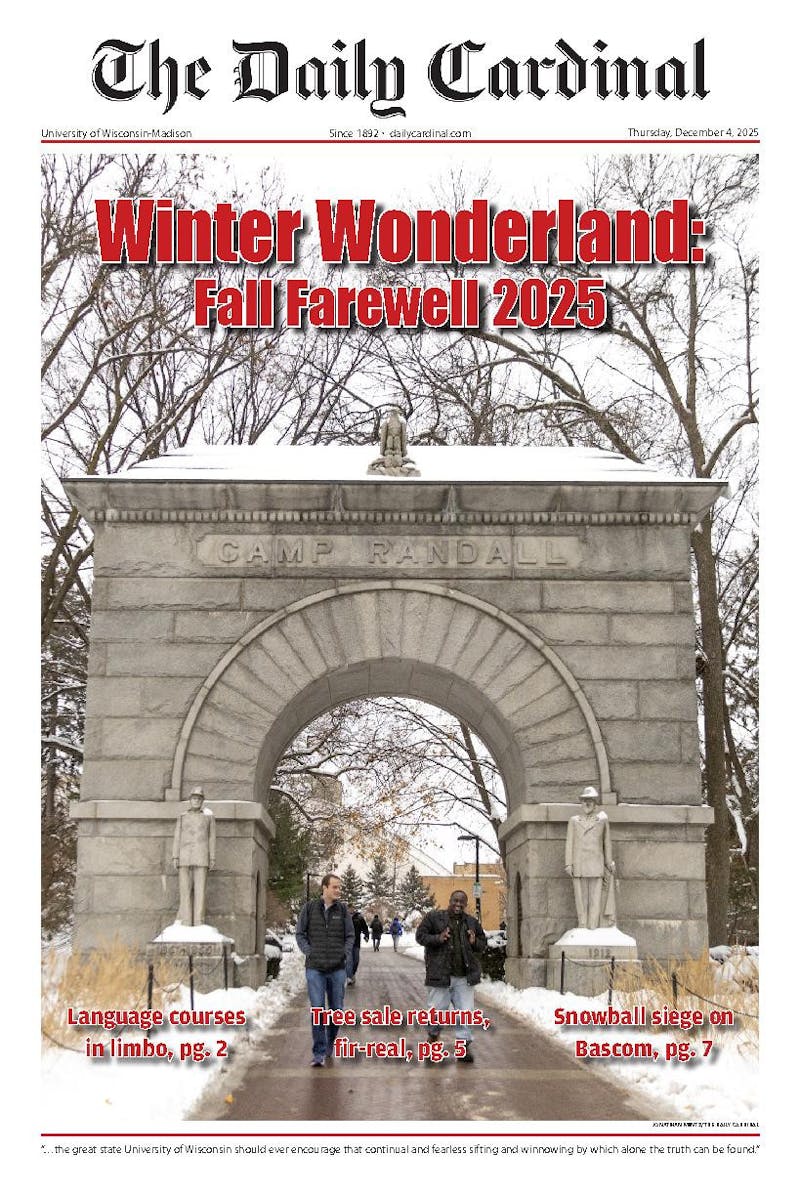If any of you have ever taken Intro to Production, you know that this is the time of the semester when everybody is scrambling to finish (or maybe even start) their final projects. I am currently in the class, struggling to make the best movie I can with only five dollars and a couple friends.
Since my earlier projects both coincidentally involved ax murderers in some form, I wanted to do something lighter'or at least something that wouldn't make my classmates think I'm a sadistic bastard with an affinity for axes. My first instinct was to come out of nowhere with a sweet, funny romantic comedy with absolutely no vulgarity whatsoever.
That sounded like a great idea, until I realized two things. First, when it comes to romantic comedy, I couldn't write my way out of a paper bag. Second, Final Cut Pro can convert a color image to black and white. A black-and-white image looks great even in this day and age; take a look at Clooney's 'Good Night and Good Luck' and, of course, 'Sin City.' From then on, any half-assed ideas I had about aping Nora Ephron were replaced by ideas about making my very own film noir.
During its heyday, film noir challenged traditional Hollywood filmmaking with inimitable style. Instead of morally upright, Production Code-enforced heroes and straightforward plots, film noir featured morally wayward protagonists, duplicitous femme fatales, twisty narratives and bleak resolutions. With hilariously hard-boiled dialogue and stunning, high-contrast cinematography, film noir was a giant cinematic revision of sugar-coated post-war values. These films are still relevant and highly entertaining today in a way that the era's classier fare is definitely not. Here's a brief list of five of my favorite noirs.
'The Third Man' (1949)'Joseph Cotton and Orson Welles star in this definitive noir classic, which is my absolute favorite. Cotton plays an unemployed pulp writer who investigates the mysterious death of his friend, the famously named Harry Lime, in post-war Vienna. He gets nowhere until the film's pivotal scene, when Carol Reed's brilliant film takes off in an entirely different direction. Robert Krasker's fantastic cinematography transforms Vienna into an expressionistic nightmare.
'The Killing' (1956)'One of Stanley Kubrick's best films. This one stars Sterling Hayden as Johnny Clay, a guy who hatches a scheme to rob a San Francisco race track after getting out of prison. Kubrick follows every character separately as they prep for the heist, which goes awry. This is as close to a flawless movie as they come'tightly structured, extremely intense and altogether iconic.
'Sunset Boulevard' (1950)'Although director Billy Wilder's noir 'Double Indemnity' is probably more popular, this is my favorite of his films. William Holden is a down-and-out screenwriter who is lying dead in a pool at the beginning of the film. Like 'American Beauty,' Holden narrates the events that led up to his death, which all involved Norma Desmond (Gloria Swanson), the has-been actress that takes him into her home. This is one of the darkest comedies to come out of classical Hollywood, and as a sharp, nasty critique of Hollywood vanity, they don't get much better.
'White Heat' (1949)'James Cagney is Cody Jarrett, a fierce gangster who also happens to be a serious mama's boy. After he is put behind bars for something minor, his double-crossing girl and partner end up killing his mother'when he hears this news, he escapes and goes looking for revenge. The showdown at the end, with an injured Jarrett screaming 'Top of the world, Ma!' is one of cinema's best.
'Pickup on South Street' (1953)'Director Samuel Fuller made a lot of terrific B-movies in his day, but this one stands out as a tough, hard-nosed classic. Frequent noir actor Richard Widmark is a pickpocket who lifts a cryptic microfilm from a gal on a train, unaware of its significance. Pretty soon the Commies are trying to bargain with him, as is the alluring dame who he stole it from, culminating in a couple of bruising fistfights that are among the most exhilarating ever filmed.





